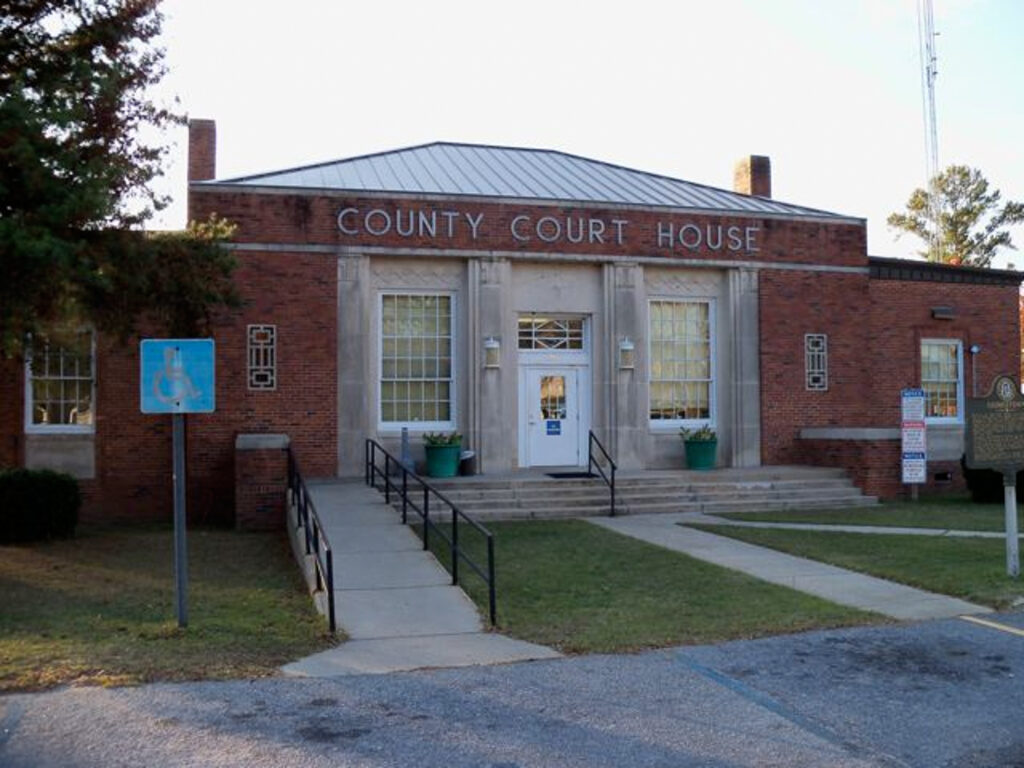Quitman County, in southwest Georgia, was established by an act of the state legislature in 1858. It became Georgia’s 128th county and was named for General John A. Quitman within five months of his death.
Quitman never lived in Georgia, but as the governor of Mississippi in the mid-1800s, he spoke persuasively in defense of states’ rights and was instrumental in shaping Georgia’s decision to secede from the Union. The legislature acknowledged his popularity and named the new county in his honor.
Separated from Alabama by the Chattahoochee River, Quitman is bordered on the north by Stewart County, on the east by Randolph County, on the south by Clay County, and on the west by Barbour County, Alabama. It consists of 152 square miles, predominantly rural farms and timberland.
The county seat, Georgetown, is also the county’s only incorporated town. The town was originally named Tabanana after a local creek. Early settlers in the area included the Creek Indians, who regarded the Chattahoochee River, with its abundant clean and clear waters rife with fish life and snakes, in a spiritual context. The Creeks were known to bathe in the cool waters four times daily, a practice that was apparently therapeutic. Today a visible alligator population resides in the backwaters of the river.

European explorers first entered the region in the seventeenth century. Towns began to emerge along the river, and the Creek population gradually disappeared from the area. The introduction of the steamboat in the mid-nineteenth century encouraged rapid growth along the Chattahoochee, including Quitman County, and the river became the major waterway for the cotton trade. By the Civil War (1861-65), the river’s centrality to southern commerce caused a considerable contest to be waged over its control. The Confederacy’s efforts to protect the Chattahoochee from Union forces were among its first strategies of engagement.
By 1900 the county population was 4,701 persons, despite Georgetown’s unsavory reputation as a center for gambling and prostitution. The Cotton Exchange functioned as the sole mercantile facility for both the county and city, but around 1920 its owner absconded with an entire cotton crop and all of the cash on hand. He was later apprehended and prosecuted, but his crimes caused Georgetown to be without banking services for nearly eighty years. According to the 2020 U.S. census, the population was 2,235.
Quitman County remains predominantly rural. The 2002 U.S. Census of Agriculture listed 23 farms in the county with 14,330 acres under cultivation. Harvests of the principal crops, corn (for grain) and peanuts, dropped between 1997 and 2002: corn to 1,700 bushels in 2002 from 41,650 in 1997; peanuts to a negligible amount (withheld by the census to avoid disclosing data for individual farms) in 2002 from 2.2 million bushels in 1997.
Lake Walter F. George, created from the Chattahoochee River in 1967 by the U.S. Army Corps of Engineers, offers such recreational activities as camping, boating, and fishing. The county is also home to a portion of the Lake Walter F. George Wildlife Management Area. Another place of interest is the Old Quitman County Jail, which was built in Georgetown during the nineteenth century and added to the National Register of Historic Places in 1981.






